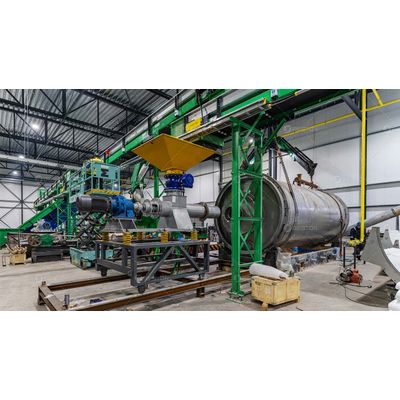

- Home
- Companies
- Beston Group Co., Ltd.
- Articles
- Pyrolysis Equipment: Unlocking the ...

Pyrolysis Equipment: Unlocking the Power of Thermal Conversion
In the realm of sustainable technologies, pyrolysis equipment stands out as a versatile and efficient solution for thermal conversion. Pyrolysis equipment utilizes high temperatures to transform various organic materials into valuable products. In this article, we will delve into the working principles, types, applications, and considerations associated with pyrolysis equipment, exploring its potential across diverse industries.
Working Principles of Pyrolysis Equipment
At the core of pyrolysis equipment lies the principle of thermal conversion. Through controlled heating, the equipment enables the decomposition of organic materials in the absence of oxygen. This process initiates a chemical reaction called pyrolysis, which breaks down the complex molecular structures of the feedstock into simpler compounds.
Heat transfer and temperature control play vital roles in the efficient operation of pyrolysis equipment. The equipment utilizes various heating mechanisms, such as direct combustion, hot gases, or electric heating elements, to reach and maintain the required temperatures. Accurate temperature control ensures optimal pyrolysis conditions and maximizes the yield of desired products.
Types of Pyrolysis Equipment
Pyrolysis equipment comes in different configurations to suit diverse needs. Slow pyrolysis equipment operates at lower temperatures and longer residence times, resulting in a higher yield of biochar and a lower quantity of liquid and gas byproducts. Fast pyrolysis equipment, on the other hand, operates at higher temperatures and shorter residence times, favoring the production of bio-oil with lesser biochar and gas byproducts.
The choice between continuous and batch pyrolysis systems depends on specific requirements. Continuous pyrolysis systems allow for a continuous feed of materials, enabling a continuous production process. Batch pyrolysis systems, on the other hand, operate in discrete cycles, allowing for more flexibility and experimentation.
Applications of Pyrolysis Equipment
Pyrolysis equipment finds applications across various industries, offering solutions for waste management, resource recovery, and energy production. One prominent application is the recycling of waste tires and plastics. Pyrolysis equipment can convert these materials into valuable products like fuel oil, carbon black, and gas, reducing the burden on landfills and promoting a circular economy.
Another important application is the conversion of biomass and agricultural waste. Pyrolysis equipment enables the transformation of these feedstocks into bio-oil, biochar, and syngas, which can be used as renewable energy sources or as inputs for various industries. This process contributes to sustainable energy production and reduces the reliance on fossil fuels.
Considerations for Choosing Pyrolysis Equipment
When selecting pyrolysis equipment, several factors need to be considered. Capacity and scalability are crucial, as they determine the volume of feedstock that can be processed and the potential for expansion. Feedstock compatibility and flexibility are also important considerations, as different pyrolysis systems may be better suited for specific feedstocks.
Energy efficiency and emissions control are key considerations for environmentally conscious operations. Efficient pyrolysis equipment utilizes waste heat recovery systems and advanced emissions control technologies to minimize energy consumption and mitigate environmental impacts.
Future Trends and Innovations in Pyrolysis Equipment
The field of pyrolysis equipment continues to evolve, with ongoing advancements and innovations. Future trends include the development of advanced thermal management systems that optimize heat transfer and temperature control, resulting in improved efficiency and product quality.
Integration of renewable energy sources, such as solar or biomass-based heat generation, is another area of innovation. This integration can enhance the sustainability and energy self-sufficiency of pyrolysis processes, further reducing the carbon footprint.
Enhanced product quality and value are also driving innovations in pyrolysis equipment. Efforts are being made to refine pyrolysis processes to produce higher-grade bio-oils, biochar with improved properties, and value-added chemicals.
Conclusion
Pyrolysis equipment offers a compelling solution for thermal conversion, enabling the transformation of organic materials into valuable products. With its diverse applications in waste management, resource recovery, and energy production, pyrolysis equipment holds immense potential for a sustainable future. By embracing this technology and advancing its capabilities, we can move closer to a circular economy, reducing waste, and maximizing resource utilization.


